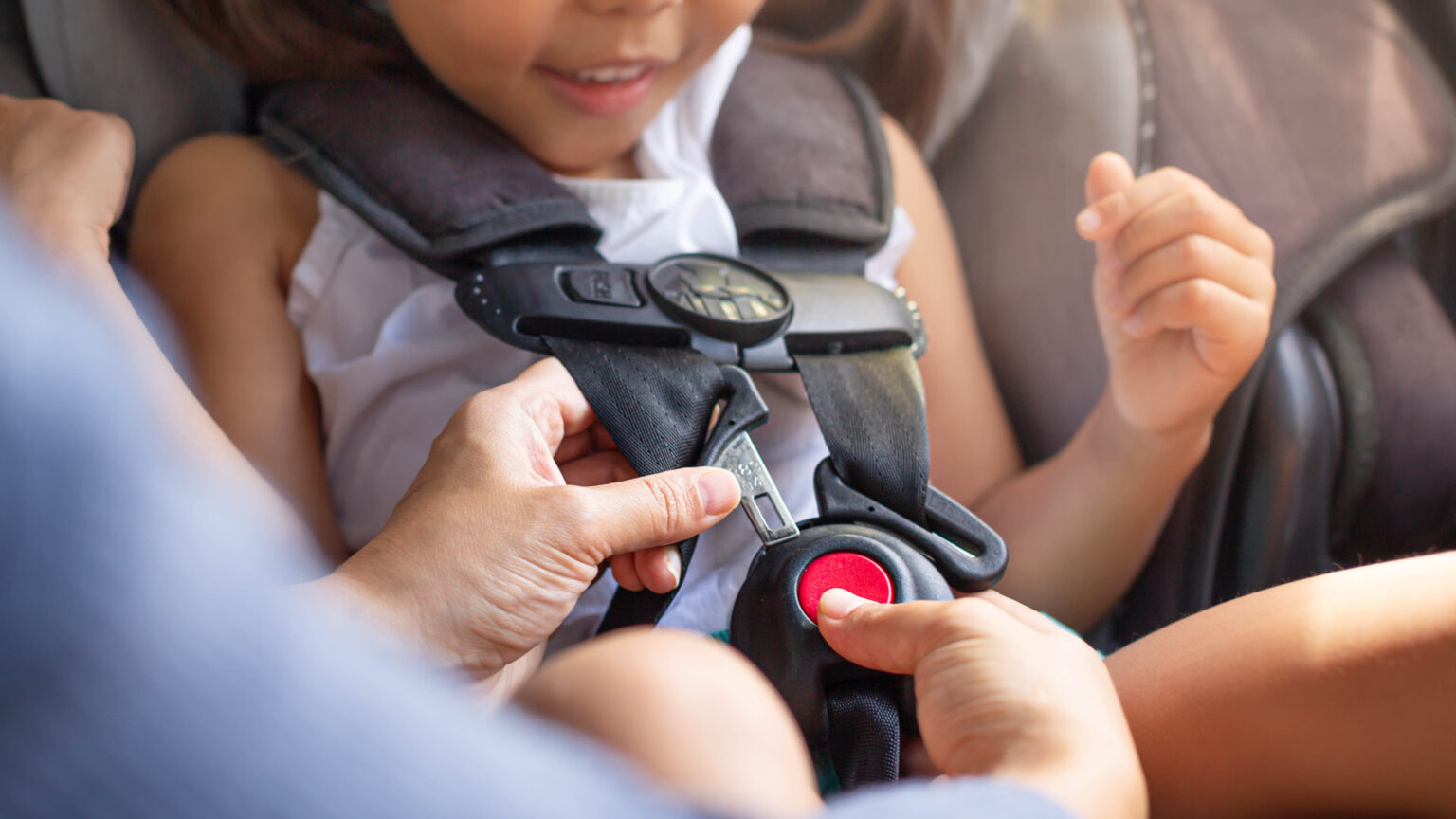Having kids changes everything, especially driving. You don’t have to rush out and buy a minivan right away, but you’ll need to take the time to learn how to install a child safety seat properly. Local fire departments, car dealers, and other organizations offer help with learning, and most car seats come with thorough directions. Even so, the vehicle you drive plays a significant role in making car seat installation easy or exceedingly difficult. The good news is that the Insurance Institute for Highway Safety rates most new models on how easy they make the process. Let’s take a closer look at how the IIHS rates LATCH and what it means for you.
What is LATCH?
LATCH stands for lower anchors and tethers for children. It refers to anchor points for securing child seats in a vehicle, which have been required in most vehicles since 2002. The system includes tethers on car seats and at least two anchor points in the vehicle. The upper anchor points may be located on the rear seatback, in the back deck, or ceiling depending on the make and model.
Child safety seats may offer multiple LATCH straps, especially convertible models that offer forward- and rear-facing installation options. The adjustable straps must be tightened to ensure the seat is securely installed, and many seats have leveling indicators to guide during the positioning process.
How the IIHS tests LATCH systems
The IIHS tests LATCH systems in vehicles for ease of installation and use. The organization created LATCH ratings in 2015 to encourage automakers to design vehicle interiors that easily accommodate child seats, making it more likely that they are properly and safely installed. The IIHS LATCH criteria include the following:
Accessibility of lower anchors: The anchors must be reachable without seat material in the way. Their location in between the seat back and bottom can make them difficult to access if they are mounted too deeply or in a weird position.
Force: How hard is it to clip the car seat to the anchor point? The IIHS uses a unique tool to measure the force required to clip and said that car seats should require less than 40 pounds to install.
Clearance angle: The anchor point clearance angle should be more than 54 degrees to be easily reachable.
The IIHS also looked at the locations of upper anchor points and said they should be located on the top deck or top 85 percent of the seatback. Anchors that are too low behind the seat are difficult to reach and use. The anchors should also be the only thing located in the lower seat area to avoid confusion with other hardware.

How the IIHS rates LATCH systems
Federal rules state that vehicles must have complete LATCH hardware in at least two rear seating positions and offer a third with at least the upper tether anchor. To score a “Good” rating, two of the LATCH positions must meet all of the criteria above, including the requirements around upper anchors and other hardware. The IIHS assigns an “Acceptable” rating for vehicles with two LATCH positions that meet 2/3 of the accessibility/force/clearance angle rules, but if either position meets fewer requirements, the score is lowered to “Marginal.” Vehicles can score a “Poor” rating if fewer criteria are met.
Some vehicles go above and beyond by offering a third LATCH position with a “Good” or “Acceptable” score and can earn an overall LATCH “Good +” rating for their efforts. Three-row vehicles can earn a “Good +” but must offer tether anchors in all rear seating positions without borrowing from other seats.

Tips for using LATCH in your car
Even if your vehicle earned top marks in IIHS testing, there are some things you need to remember.
- Follow weight and size limits carefully: Be sure to follow the car seat manufacturer’s guidance to keep your child safe. This means maintaining a rear-facing position and positioning the seat properly based on your child’s height and weight.
- Top tethers: Always use top tethers to prevent the seat from flying forward in a collision.
- Use seatbelt if there’s no LATCH: You must anchor the seat, so for older models or those without LATCH, use the seatbelt according to the car seat manufacturer’s directions.
- Install securely: You’ll need to firmly push the car seat into the rear seat to ensure secure installation. It might require a helper to tighten the straps while you press the seat firmly.








